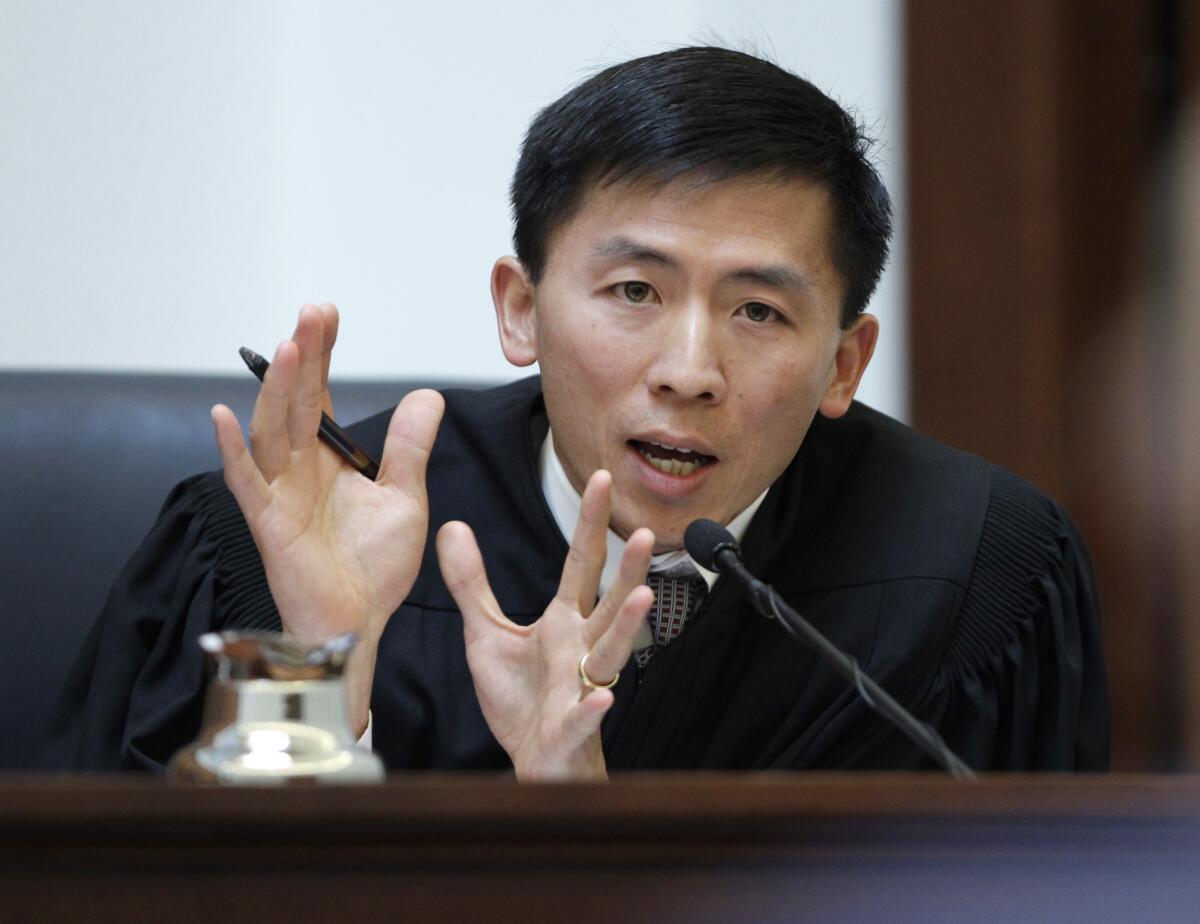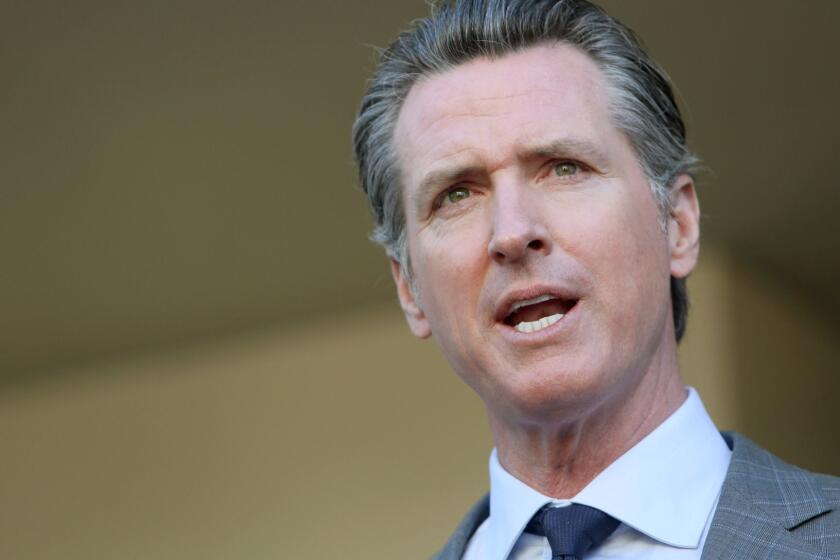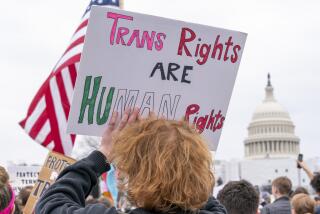California’s top court weighs overturning hundreds of death penalty sentences

For decades, California’s highest court has left it up to individual jurors to decide whether certain circumstances increase the severity of a crime and thereby warrant the death penalty in murder cases that qualify for the ultimate punishment.
On Wednesday, the state Supreme Court heard arguments on a change to that long-standing practice, which could potentially overturn hundreds of death penalty sentences in California.
At issue is how juries review “aggravating” factors — such as whether a crime was gang-related or involved multiple victims. Defense lawyers in the case argued that to ensure equal application of the death penalty, state law and the state Constitution require juries to be unanimous in their reasoning on each factor.
That the court is even considering new requirements is unusual. It has refused to impose them in the past and has even summarily dismissed the kind of arguments presented Wednesday.
But the court’s composition has changed over the years. Last June, the court issued a brief order asking for written arguments on the jury issue in what was otherwise a routine death penalty case. That raised hopes among some that the court might be ready to wield an ax to capital punishment in California, a state that has produced the nation’s largest death row but hardly any executions.
Wednesday’s hearing probably tempered those hopes. During a 90-minute hearing, only three justices — the more liberal members of the seven-judge court — spoke. Though the silence of the majority can be interpreted in different ways, the hearing did not clearly signal that monumental changes were afoot.
The June order asked litigants to submit written arguments on this issue: Must a jury decide beyond a reasonable doubt that a defendant should get the death penalty or life without parole, and must that jury also be unanimous in deciding the reasons for a capital verdict? If the court agreed, a ruling would probably throw out hundreds, if not all, previous death sentences in California.
The court’s sudden interest in the issue alarmed death penalty supporters. They considered the questions long answered. Kent Scheidegger, a lawyer for a prominent pro-death penalty group, said he was both “surprised” and “very disturbed,” even with the changed composition of the court.
Over the last decade, appointments by Govs. Jerry Brown and Gavin Newsom, both opponents of the death penalty, have transformed the court from a moderately conservative forum dominated by former prosecutors to a moderately liberal one. Democratic appointees now hold five of the seven seats.
Newsom, moreover, filed written arguments in the case urging the court to take a new path. In a brief written by two legal scholars, Newsom assailed the death penalty as racist and cited study after study that found the system discriminated against Black and Latino defendants.
Justice Goodwin Liu, a Brown appointee, spoke the most during the hearing. He repeatedly pressed defense lawyers to cite precedent for their positions.
“I think there’s a lot of appeal to your argument from a fairness perspective,” Liu told a defense lawyer.
Liu’s “difficulty,” he said, was in finding cases that supported the argument legally. Is it possible, he asked, “that this issue has simply been missed this entire time? For 150 years, we have missed this issue?”
Under California’s death penalty law, capital trials are held in two phases. In the first, the jury decides guilt. The verdict must be unanimous and beyond a reasonable doubt.
During the second phase, the jury decides whether to impose the death penalty or life without possibility of parole. The jury considers “aggravating” factors that favor the death penalty and weighs them against mitigating factors, such as a defendant’s history of being severely abused.
Individual jurors can now decide which of several disputed, aggravating factors weigh in favor of death. Their decision on the penalty must be unanimous, but their reasoning can be varied. Defense lawyers want the court to require the jury to agree unanimously on what factor justified the death penalty and to decide the penalty under a “beyond a reasonable doubt” standard.
Justice Joshua Groban, another Brown appointee, noted that courts uphold criminal verdicts all the time in which different jurors had different views about how the crime was committed.
But both Liu and Justice Mariano-Florentino Cuéllar, also a Brown appointee, seemed open to the idea that an ultimate jury decision on whether a defendant should live or die should be made beyond a reasonable doubt.
Scheidegger said even that partial victory for the defense would have a “cataclysmic” impact on the death penalty and potentially overturn scores of sentences. Such decisions in California are usually applied retroactively.
But Scheidegger said he felt “cautiously optimistic” after the hearing.
Liu, he said, did not seem “to be buying” the defendant’s main arguments.
UC Berkeley law professor Elisabeth A. Semel, who co-wrote Newsom’s written argument, declined to predict how the court would vote.
“Justices Liu, Cuellar, and Groban had some tough questions” for the deputy attorney general defending the death penalty, she said. “I do not believe she answered to their satisfaction.”
California has more than 700 inmates on death row, but legal challenges have stymied executions. Only 13 inmates have been executed since 1992, and Newsom imposed a moratorium on executions during his term in office.
UC Berkeley study finds 48% of voters supported Gov. Gavin Newsom’s 2019 order for moratorium on executions in California, whereas 33% were opposed.
The case before the court is an appeal brought by Don’te Lamont McDaniel, who was convicted with a co-defendant of entering an apartment in South Los Angeles’ Nickerson Gardens public housing project in April 2004 to settle a drug dispute.
McDaniel was convicted of killing two people and wounding two witnesses. The dead were 33-year-old George Brooks and Brooks’ 52-year-old cousin Annette Anderson.
Whatever the court decides, the case of People v. Don’te Lamont McDaniel has focused attention on the fairness of the jury process in deciding the sentence.
Even Deputy Atty. Gen. Dana Muhammad Ali, who argued that the law does not require the new jury rules, called the arguments of McDaniel’s lawyers “persuasive.” She said the state prosecutor’s office believes that adding such rules “deserves serious consideration” by voters, who could change the requirements for how juries decide the death penalty.
“These additional requirements are feasible because there are other states that have incorporated them into their death penalty schemes,” she told the court.
Defense lawyer Elias Batchelder implored the court to be bold, despite the many rulings that upheld death sentences without imposing the jury requirements.
“Sometimes courts make profound mistakes,” he said, “and it is not a malfunction of justice for courts to look deeply at history and reconsider.”
More to Read
Sign up for Essential California
The most important California stories and recommendations in your inbox every morning.
You may occasionally receive promotional content from the Los Angeles Times.













